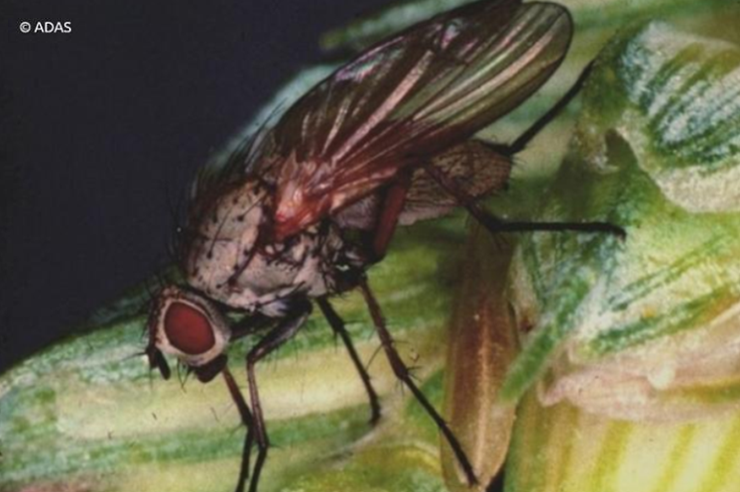Wheat bulb fly
Wheat bulb fly is a serious pest of wheat crops. The larvae feed on the central shoot of wheat, causing it to turn yellow then die. This symptom is known as a "deadheart" symptom. The female lays eggs during the summer months (July - September), and bare soil is the preferred site. Consequently, wheat sown after potatoes, peas, oilseed rape, field vegetables, fallow and set-aside are, particularly at risk.
The eggs begin to hatch in January/February and may continue through to mid-March. Severe damage is only caused to crops that have yet to form multiple tillers. As a general rule, crops sown before mid-October will be less affected by this pest. Later sown crops which may only have a single shoot at egg hatch, may be completely killed by the grub feeding in the single shoot.
Treatment thresholds for wheat bulb fly are based on egg counts in soil from fields planned for winter wheat or spring barley. The threshold for late sown wheat crops is 1.25 million eggs/hectare. Winter barley is usually sown early enough to withstand any damage.

Sign up to the FAS newsletter
Receive updates on news, events and publications from Scotland’s Farm Advisory Service
